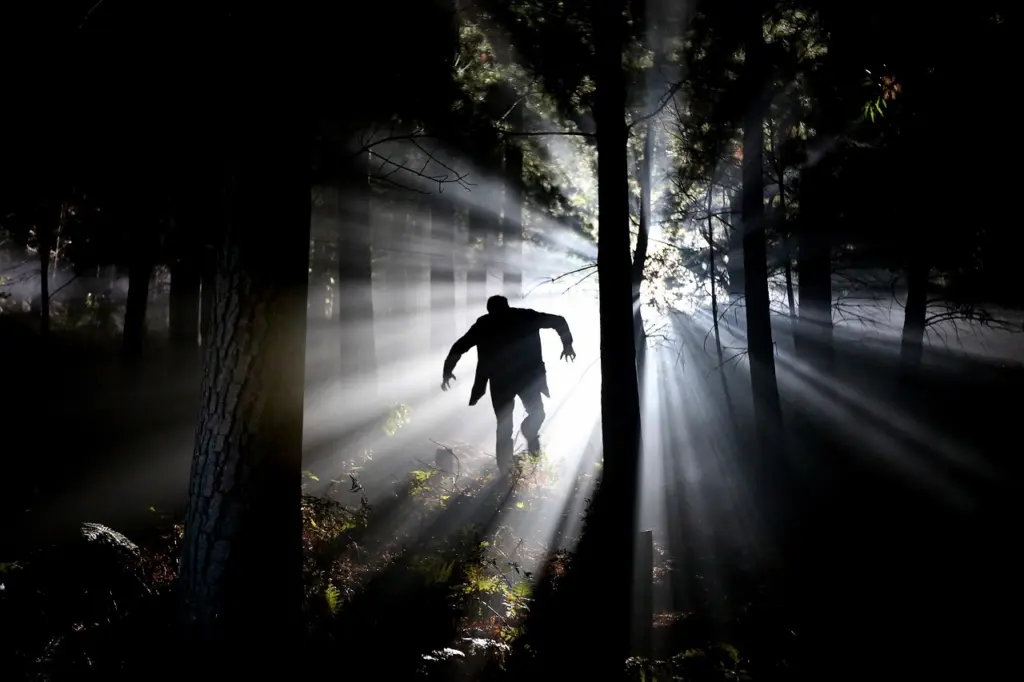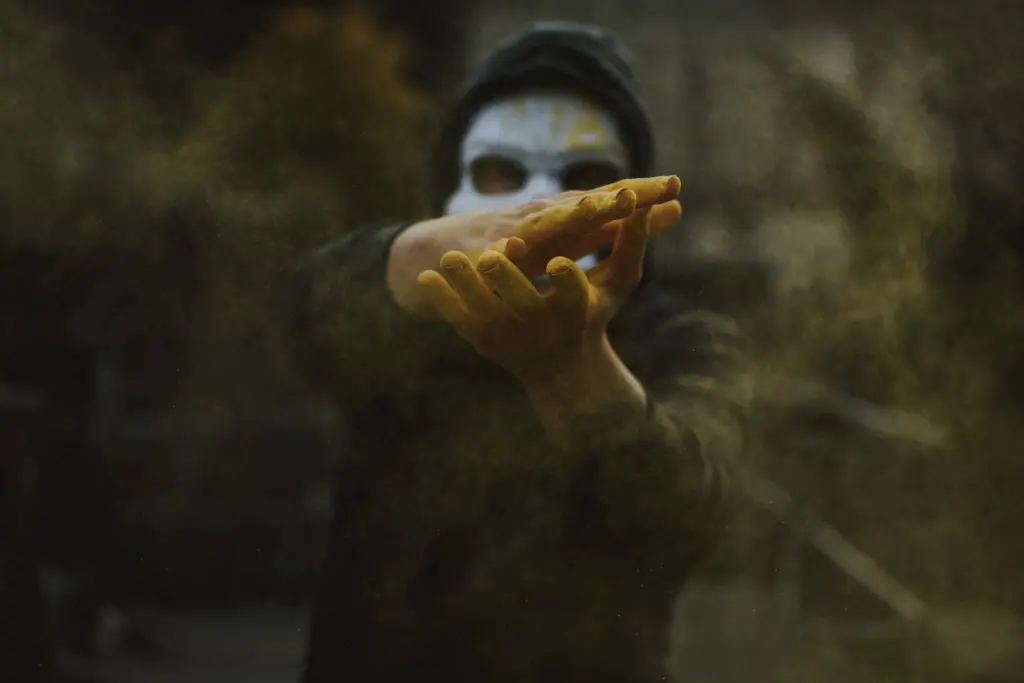
“From that fateful day when stinking bits of slime first crawled from the sea and shouted to the cold stars, ‘I am man,’ our greatest dread has always been the knowledge of our mortality. But tonight, we shall hurl the gauntlet of science into the frightful face of death itself.” —Dr. Frederick Frankenstein, “Young Frankenstein,” Disney, 1974
We don’t suffer from coulrophobia (fear of clowns) or masklophobia (fear of masks/costumes), but when we hear that a movie is being shown that highlights them, we tend to avoid it. We started thinking about horror movies a little more after Scream VI sliced its way past Creed III at the box office.
Jonathan Majors and Michael B. Jordan were in a lot better shape than some spook in a robe and a mask—an idea he had stolen from Edvard Munch’s famous painting. Then someone pointed out that of all the horror films released, very few have ever received an Oscar nomination, let alone the golden statue itself. That’s OK with us because we tend to avoid about two-thirds of these kinds of films, even though they are one of the most profitable genres produced.
If a project has a whiff of success, it’s certain to give birth to sequel after sequel until someone finally, mercilessly, does it in. We do make exceptions though…. Jamie Lee Curtis had been through so much in Halloween. Because she had been through so much with Michael Myers (and his mask), we really wanted to see her rip him a new one and get on with her life. Academy voters wouldn’t even think about giving her a statue for that hard work, but Everything Everywhere All at Once is different… it’s a “real” movie.
We enjoyed The Silence of the Lambs, which was accidentally nominated for an Oscar. Dr. Lecter’s mask felt like fitting punishment for him. But with a few exceptions, the largely old, white guy Academy tends to look down their noses at horror films because, according to one of the folks with a vote, they’re just “popcorn movies.” Yeah, that’s about it. Horror flicks seldom get huge budgets—Scream VI had a reported budget of $33 million and racked up ticket sales of about $169 million, while Creed III had a budget of $75 million and took in about $273 million worldwide.
The slasher shows also sold a whole lot of popcorn and expensive other stuff! Movie houses love their concessions and are even moving to expand the service with on-premise food preparation/delivery. For them, the stuff is more profitable than the film and almost as good as you have at home.
Last year, 449 movies were released in the Americas. That’s up from 406 in 2020, according to Statista. That’s also a long way from the year before (56.7% less, to be precise), and a lot of them were various types of horror films—comedy, drama, alien, blood/gore, zombie, sci-fi. And while they were still enjoyed by theater bosses and younger audiences, they were dismissed by the “professionals.” Notably, when it comes to something scary, viewers tell all their friends everything but the slashing surprises.
Despite the limited view of the Academy voters, there are 20 genres of films that suck folks into the theater or entice them to sign up for a specific streaming service. They include action, adventure, animation, biography, comedy, crime, drama, family, fantasy, history, horror, music, musical, mystery, romance, sci-fi, sports, thriller, war, and western.

(Source: Karolina Grabowska, Pexels)
According to Stephen Follows, film industry analyst/educator, horror movies in the Americas have a better chance of making a profit than another genres. He estimates that 53% of horror movies that have appeared in theaters in the 10 years prior to the pandemic produced profit for everyone involved. When he compared the results with other genres, performance tended to fluctuate, but 80% of the horror flicks made a profit, and even in the worst year, the number fell to only 22%. The industry average for the same period was 37% across all genres.
Compare horror project results to other genres:
- Westerns—16% might be profitable
- Black comedies —28% might be profitable
- Drama—31% could turn a profit
- Thrillers—32% would be profitable
This means you really have to screw up a horror film to not turn a profit.
Frankly, we think part of the award selection process should be that the film is making money so the profits can be used to create more films, whether they’re in a theater or streamed. Take Jordan Peele’s Nope, for example. They didn’t even give it a second look—simple repeat of its title—even though it had a great storyline, cinematography, acting, and post work. More importantly, it brought in about $175 million compared to a budget of $68 million.
And Peele isn’t a one-film wonder. He has a string of right-night films. Get Out is one of the few horror genre projects that took home a statue for best screenplay. It cost a mind-boggling $4.5 million and grossed more than $255 million, which is a whole lotta popcorn. His other spine-tingler, Us, also showed great numbers with the thrill-me/chill-me crowd. With three solid theatrical and streaming films to his credit, you can be certain Universal will green-light whatever his next horror flick is.
The other film in the genre that didn’t even get a mention was M3GAN. The film cost pocket change ($14 million), brought in more than $175 million, racked up 94% percent on Rotten Tomatoes, was seen by more people than many of the year’s Oscar nominations, and a sequel is already on the books. As much as we liked it, we can tell you that our daughter won’t be getting any more companion dolls!
There have been some great/memorable performances by folks in the genre and superb storylines—Prey and the Comanche portrayal scared us and made us appreciate the history of the Native American like never before.
In other words, the entertainment “establishment” needs to have a greater appreciation for the horror film category because the lower budgets enabled more projects to be done. That meant more employment for production/post folks and kept the sweet spot of the audience—15–39 years old—putting their seats in seats to help the theater industry slowly recover.
Yes, horror films are also the content the streamers need to expand and retain their subscription base. Sure, everyone loves to be involved in and enjoy blockbusters and tentpoles like Top Gun and Avatar, and thrilling stuff like the Marvel extravaganzas, but we can’t forget that it’s still called the entertainment business, especially when folks are talking about minor industry subjects like Hollywood contract negotiations.
More importantly, when a film catches the audience’s fancy, you can be certain a sequel and spin-off won’t be far behind. Cocaine Bear cost about $30 million to make and has snorted up more than $70 million in ticket sales while breeding some mind-boggling offspring like Attack of the Meth Gator and yes, Cocaine Shark, which will probably be so bad it will be good. Nothing makes the industry’s prime target market jump into/out of their seats like an even modestly good horror film.
Follows and other folks who are enamored with horror films have done an excellent job of gathering/analyzing industry data to give filmmakers a great set of guidelines on the story ideas they have and their chances of turning a profit. His Horror Report is practically a road map to ensuring you’ll not only produce a film that people will like, but will also provide a great ROI for your second and third big projects.
One of the things we’ve noticed about horror films is that these days they seem to be a lot less gory and mentally disturbing, and instead have a mild shock/surprise to keep you watching to see what you might miss.
As you might expect, few of the more successful horror projects are written/produced with the arts and crafts audience in mind. Follows found the audiences that really enjoy horror movies are in the 15- to 35-year-old crowd and generally in the sweet spot of the world’s population—regular working-class folks. You know, people like you, us, and the billions of others on the planet.
Most of the films have a short window in theaters, or as Julia Alexander of Parrot Analytics said, “We see the most return in opening weekend box-office revenue compared to production budgets.” Or perhaps it’s the fact that they are a nice jolt back to ordinary life, getting out, enjoying themselves, and forgetting about outside problems at least for a few hours.
We don’t really care what label shrinks want to put on horror films or how they like to analyze their appeal to people. Paranormal Activity, The Blair Witch Project, and Night of the Living Dead are great entertainment.

(Source: Lil Artsy, Pexels)
As Dr. Frederick Frankenstein said in Young Frankenstein, “This is a nice boy. This is a good boy. This is a mother’s angel. And I want the world to know once and for all, and without any shame, that we love him.”
Even if the Academy doesn’t appreciate the boy as much as the audience, theaters certainly do, and for the people in the entertainment creation, production, and delivery industry, the horror film can pretty reliably turn out to be a movie folks want to see, even if it only has a modest budget. Most important is the fact that there’s an excellent chance it will produce a nice profit for the backers and you.
If it really clicks with the audience and a few of the reviewers, you can think seriously about a sequel or six, and maybe a spin-off or two. In addition, if you use the right props, costumes, and masks, there could be a long-term revenue stream for your retirement.





